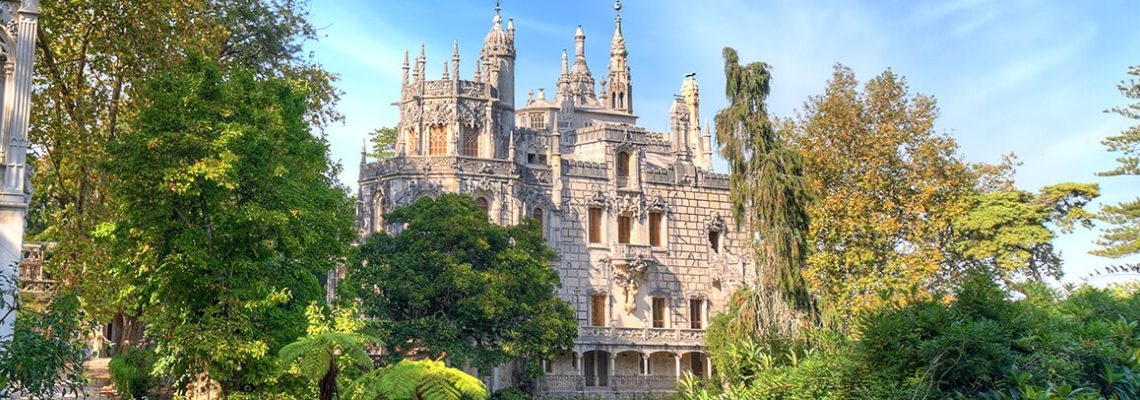“Romantic” and “magical” are words often used to describe Portugal as a whole, but they particularly apply to Sintra, a small town about 30 minutes from Lisbon. For centuries, this area offered the Portuguese royal court a cool and peaceful summer escape from the heat and bustle of Lisbon—hence the grand palaces and noble manor houses that dot the landscape, which make this a UNESCO World Heritage Site. But when people talk about Sintra, they aren’t only referring to the historical town center; the name also refers to the hills it sits on and the larger surrounding area. A great part of Sintra’s appeal is its microclimate and the lush landscape it supports. Between forested hills, sandy beaches and rugged coastal cliff-top trails, this area attracts walkers, hikers, mountain bikers and surfers, as well as more traditional tourists and sightseers. Almost all of the major monuments are surrounded by wildly beautiful landscaped gardens and grounds which can take hours to fully explore. This added active, outdoor aspect is important to know about, because in recent years, Sintra’s center was beginning to suffer a bit from its own popularity; it was just getting too crowded. COVID travel shutdowns brought that to an abrupt halt, of course, and it might take a while for that level of congestion to build up again—which is a good reason to come and see it now. At the very least, understanding more about the area can help visitors get the full benefit of what it has to offer. It is almost impossible to enter the center with a car, these days, and inconvenient to get to some of the further flung sites without one. Advance research and planning, or support from a tour, guide and/or driver, are advisable. Many daytrippers from Lisbon come in by train,
“Romantic” and “magical” are words often used to describe Portugal as a whole, but they particularly apply to Sintra, a small town about 30 minutes from Lisbon. For centuries, this area offered the Portuguese royal court a cool and peaceful summer escape from the heat and bustle of Lisbon—hence the grand palaces and noble manor

